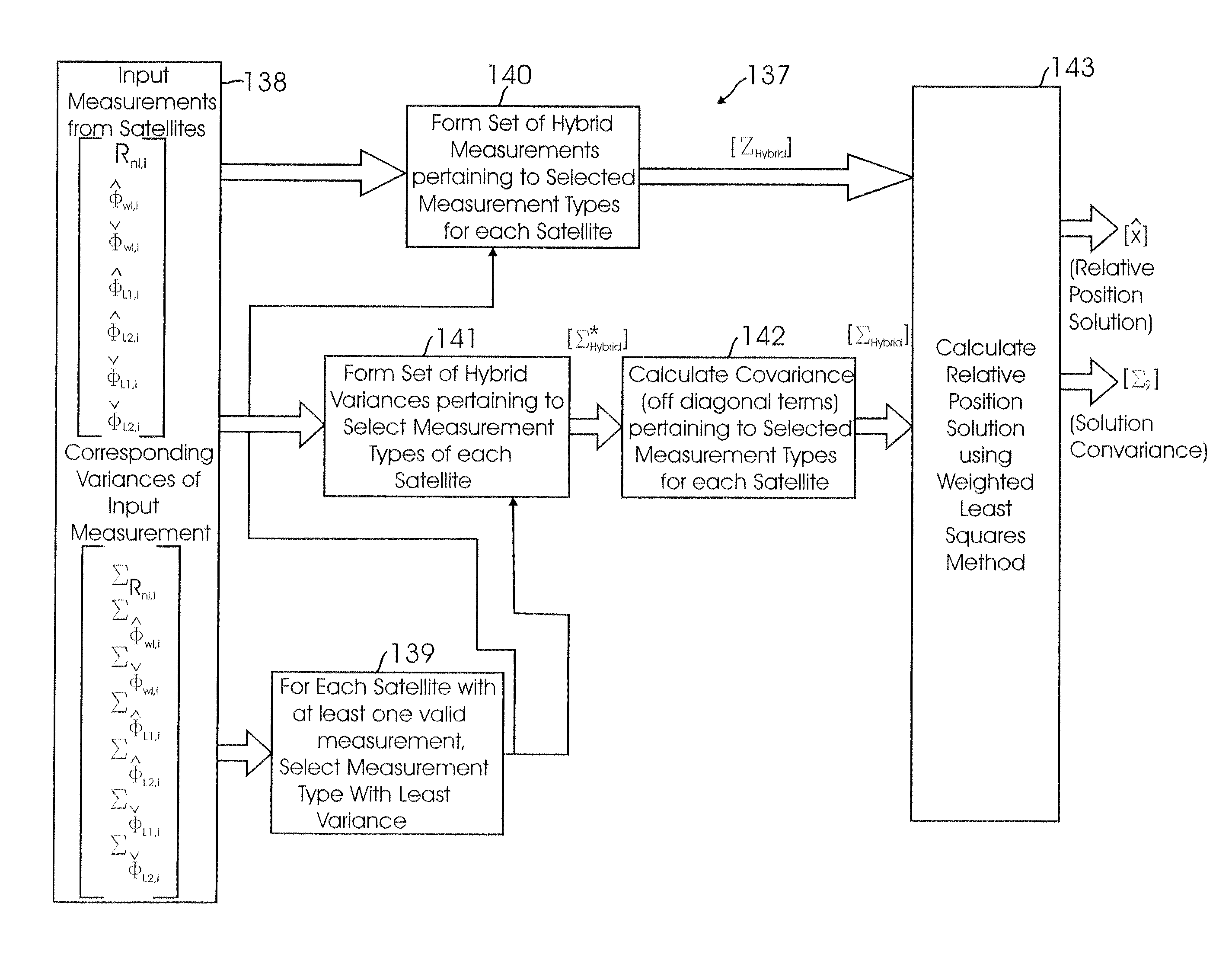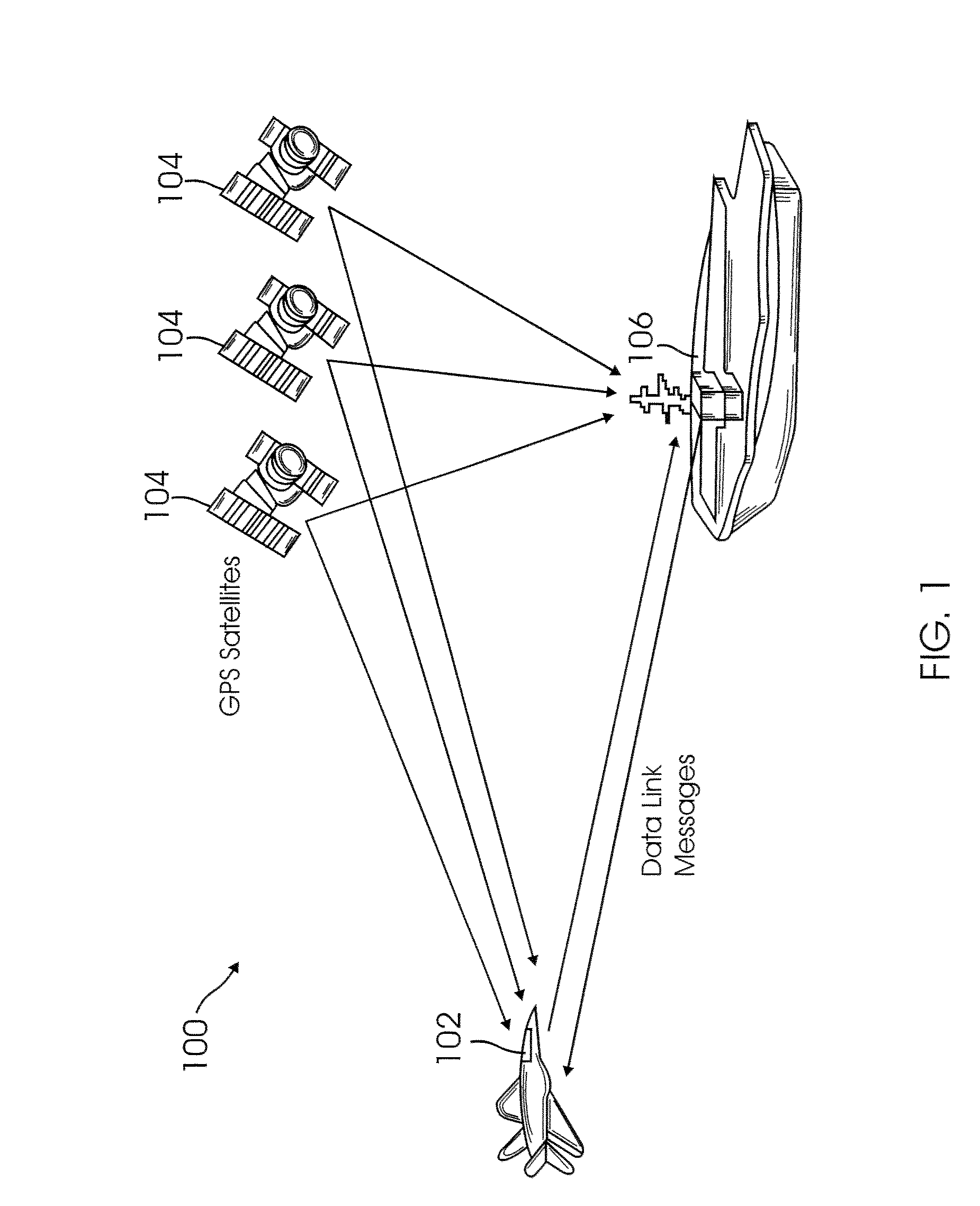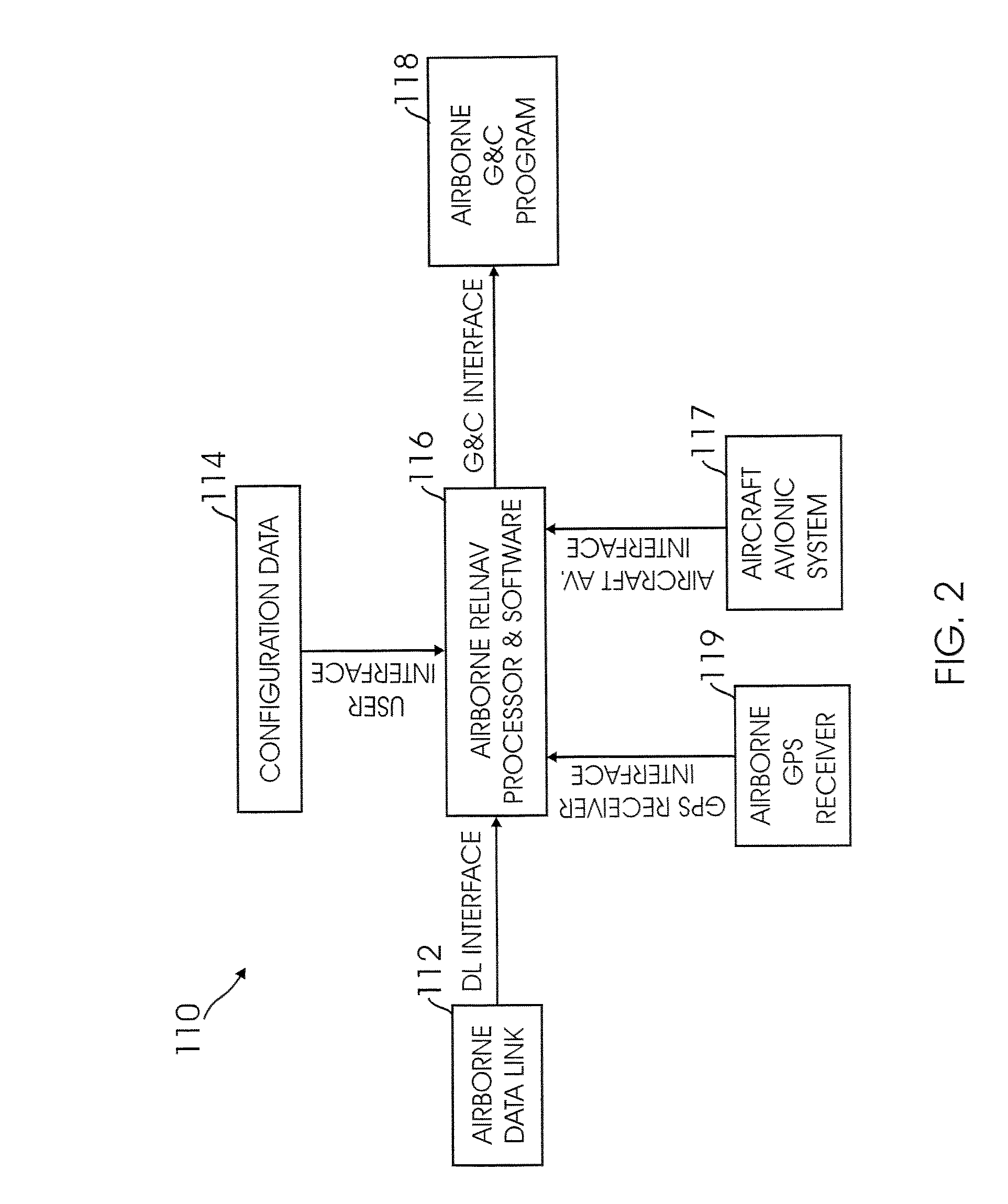Method for fusing multiple GPS measurement types into a weighted least squares solution
a technology of weighted least squares and gps, applied in wave based measurement systems, instruments, transmission systems, etc., can solve the problems of numerous measurements, inability to make optimal solutions available, and existing civil and military systems that do not meet the requirements of jpals, so as to achieve optimal accuracy in position solutions and speed and accuracy of position calculations.
- Summary
- Abstract
- Description
- Claims
- Application Information
AI Technical Summary
Benefits of technology
Problems solved by technology
Method used
Image
Examples
Embodiment Construction
[0017]The following definitions are provided as they are typically (but not exclusively) used in GPS-based navigation systems implementing the various adaptive aspects of the present invention.
[0018]The GPS is a satellite-based navigation system having a constellation of 24 Earth orbiting satellites. These satellites are approximately uniformly dispersed around six circular orbits having four satellites in each orbit. Each GPS satellite transmits at two frequencies: L1 (1575.42 MHz) and L2 (1227.60 MHz). The L1 frequency has two different spread-spectrum codes modulated on it: a coarse acquisition (CA) code, and a Y code. The Y code is also modulated onto the L2 carrier.
[0019]Earth centered, Earth fixed (ECEF) is a Cartesian coordinate system used for GPS. It represents positions as X. Y. and Z coordinates in meters. The point (0.0.0) denotes the center of the earth, hence the name Earth-Centered.
[0020]World Geodetic System of 1984 (WGS 84) a geodetic reference systems used by GPS a...
PUM
 Login to View More
Login to View More Abstract
Description
Claims
Application Information
 Login to View More
Login to View More - R&D
- Intellectual Property
- Life Sciences
- Materials
- Tech Scout
- Unparalleled Data Quality
- Higher Quality Content
- 60% Fewer Hallucinations
Browse by: Latest US Patents, China's latest patents, Technical Efficacy Thesaurus, Application Domain, Technology Topic, Popular Technical Reports.
© 2025 PatSnap. All rights reserved.Legal|Privacy policy|Modern Slavery Act Transparency Statement|Sitemap|About US| Contact US: help@patsnap.com



